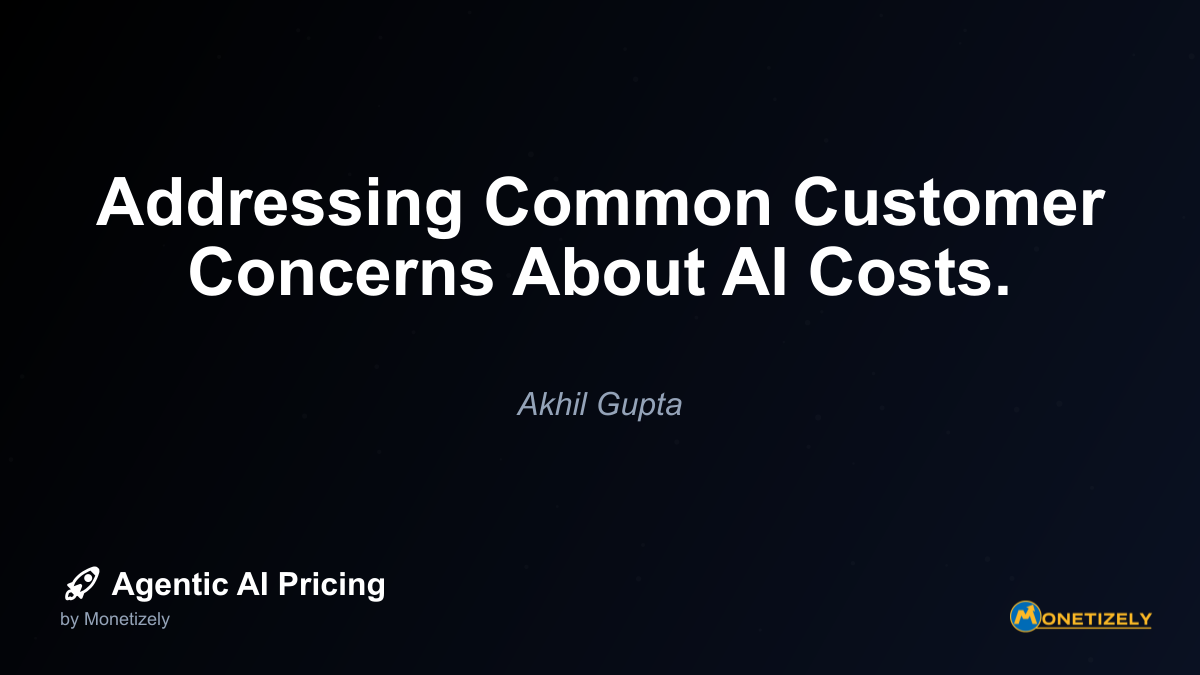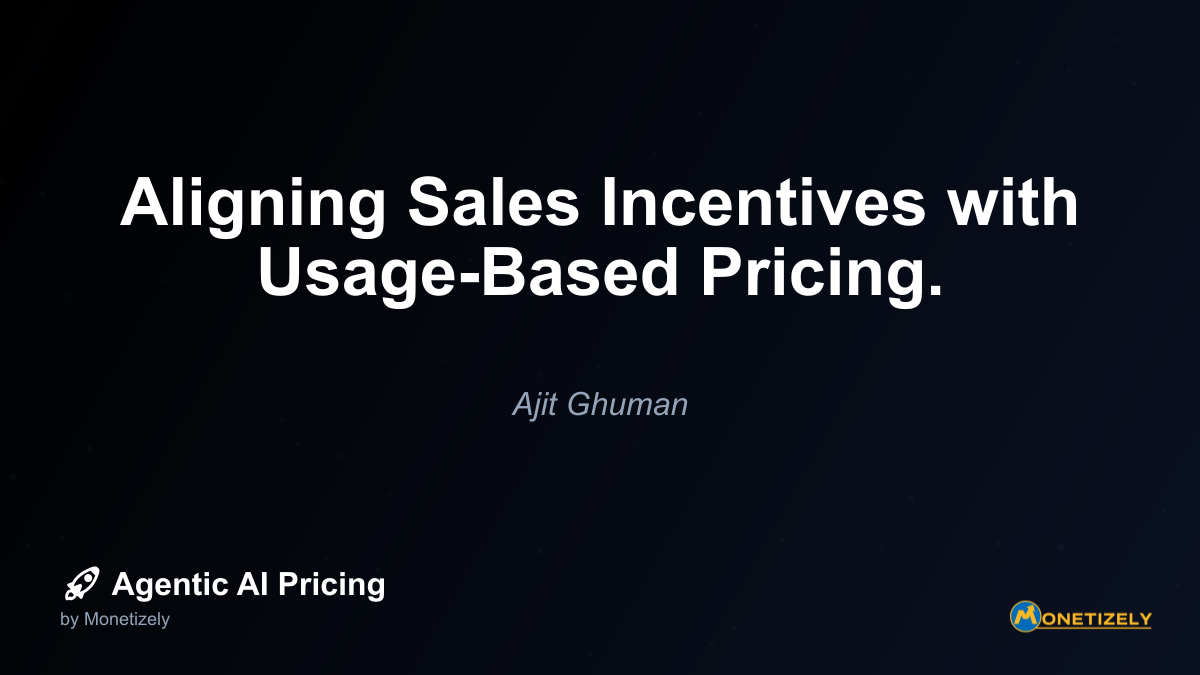· Akhil Gupta · Best Practices · 8 min read
Accounting for Compliance Costs in AI Pricing.
AI and SaaS Pricing Masterclass
Learn the art of strategic pricing directly from industry experts. Our comprehensive course provides frameworks and methodologies for optimizing your pricing strategy in the evolving AI landscape. Earn a professional certification that can be imported directly to your LinkedIn profile.

Regulatory compliance represents one of the most significant challenges for organizations deploying AI solutions in heavily regulated industries. While the transformative potential of agentic AI is undeniable, the compliance burden introduces complex cost considerations that both vendors and customers must navigate strategically.
The Hidden Compliance Tax on AI Implementation
When organizations in regulated sectors like healthcare, finance, or government consider AI adoption, they face a compliance burden that extends far beyond the sticker price of the technology itself. These compliance costs function as a hidden tax that can dramatically impact the total cost of ownership.
For AI vendors, understanding these compliance dynamics isn’t just good business—it’s essential for creating pricing models that accurately reflect the true value and cost structure of their solutions. Vendors who fail to account for compliance requirements risk creating unsustainable pricing models that either leave money on the table or price themselves out of regulated markets entirely.
According to recent industry analyses, compliance-related activities can consume up to 30% of AI implementation budgets in highly regulated industries. This significant allocation encompasses various requirements that simply cannot be ignored:
- Data governance frameworks and documentation
- Regular security assessments and penetration testing
- Audit trail capabilities and reporting mechanisms
- Certification processes and external validation
- Staff training on compliance protocols
- Ongoing monitoring and compliance updates
For healthcare organizations implementing AI under HIPAA requirements, for example, the compliance overhead includes not just initial certification but continuous monitoring, documentation, and regular reassessment—all of which translate to real costs that must be factored into pricing considerations.
Why Compliance Costs Vary Dramatically Across Industries
The compliance burden isn’t uniform across sectors, creating significant pricing challenges for AI vendors serving multiple industries. Understanding these variations is crucial for developing appropriate pricing strategies.
Healthcare: The High-Water Mark for Compliance Costs
Healthcare organizations implementing AI solutions face perhaps the most stringent compliance requirements of any industry. Between HIPAA, FDA regulations for medical devices (which may include certain AI systems), and various state-level privacy laws, the compliance overhead is substantial.
For AI vendors, this translates to several specific cost drivers:
- Protected Health Information (PHI) handling requirements
- Extensive documentation of model development and validation
- Rigorous testing protocols and validation studies
- Regular security assessments and vulnerability testing
- Patient consent management systems
- Detailed audit logging capabilities
These requirements necessitate specialized development approaches, additional infrastructure, and ongoing operational overhead that directly impacts cost structures.
Financial Services: Complex but Well-Defined Requirements
The financial sector presents its own compliance challenges for AI implementation, including:
- Anti-money laundering (AML) and Know Your Customer (KYC) integration
- Explainability requirements for credit and lending decisions
- Audit trails for algorithmic trading systems
- Model risk management documentation
- Fair lending compliance testing
- Cross-border data handling restrictions
While the financial sector’s compliance requirements are substantial, they benefit from relatively clear regulatory frameworks compared to some other industries, allowing for more standardized compliance approaches.
Government and Defense: Security-First Compliance
Government applications of AI must navigate:
- FedRAMP certification requirements
- Classification and data handling protocols
- Supply chain security verification
- Specialized hosting requirements (often air-gapped)
- Strict personnel access controls
- Domestic development restrictions
The compliance costs in this sector are dominated by security considerations, creating a substantially different cost profile than healthcare or financial services.
How to Structure AI Pricing to Account for Compliance Costs
For AI vendors, effectively accounting for compliance costs requires thoughtful pricing architecture that balances transparency with business sustainability. Several approaches have proven effective:
1. Compliance-Tiered Pricing Models
Rather than creating a one-size-fits-all pricing structure, vendors can develop industry-specific tiers that incorporate the compliance overhead associated with different regulatory environments.
A practical implementation might include:
- Standard Tier: Basic compliance features suitable for minimally regulated industries
- Regulated Industry Tier: Enhanced compliance capabilities for sectors with moderate regulation
- High-Compliance Tier: Comprehensive compliance features for healthcare, finance, and government
This approach allows vendors to align pricing with the actual compliance costs incurred while providing customers with transparency about what they’re paying for.
2. Modular Compliance Add-Ons
Some vendors have found success with a modular approach, offering core AI functionality at a base price with optional compliance modules available as add-ons:
- HIPAA compliance package
- Financial services regulatory package
- FedRAMP compliance module
- GDPR/privacy enhancement package
- Industry-specific audit trail capabilities
This approach allows customers to pay only for the specific compliance capabilities they need, while giving vendors a mechanism to recoup specialized development and operational costs.
3. Implementation Service Scaling
Another effective approach involves scaling implementation services based on the compliance complexity of the customer’s environment:
- Basic Implementation: Standard deployment without specialized compliance considerations
- Compliance-Guided Implementation: Deployment with guidance on meeting common regulatory requirements
- Full Compliance Implementation: Comprehensive implementation service that handles all aspects of regulatory alignment
This model recognizes that much of the compliance cost occurs during implementation and allows for appropriate pricing of these services.
4. Operational Support Tiers
Since compliance isn’t a one-time effort but an ongoing process, structuring operational support tiers around compliance needs provides another avenue for appropriate cost recovery:
- Standard Support: Technical assistance and basic updates
- Compliance Support: Includes regulatory monitoring and compliance-related updates
- Premium Compliance Support: Adds proactive compliance monitoring, regular assessments, and documentation assistance
This approach acknowledges the ongoing operational overhead of maintaining compliance and creates a sustainable revenue stream to support these activities.
Quantifying Compliance Costs for Transparent Pricing
For AI vendors, developing pricing models that accurately reflect compliance costs requires a systematic approach to cost quantification. This process should include:
Direct Development Costs
- Engineering hours dedicated to compliance features
- Specialized security testing and validation
- Third-party certification expenses
- Compliance documentation development
- Regulatory expert consultation
Ongoing Operational Costs
- Compliance monitoring and reporting systems
- Regular security assessments and penetration testing
- Audit support capabilities
- Regulatory update implementation
- Compliance-related customer support
Opportunity Costs
- Extended development timelines
- Market entry delays for regulatory approval
- Limitations on feature deployment velocity
- Constraints on data usage and model development
By systematically quantifying these costs, vendors can develop pricing models that accurately reflect the true cost of delivering compliant AI solutions while maintaining healthy margins.
Case Study: Compliance Cost Impact in Healthcare AI Pricing
A leading healthcare AI vendor provides an instructive example of effective compliance cost management in pricing. The company initially offered a single pricing tier but found that compliance-related development and operations consumed nearly 40% of their resources while being utilized by only 60% of their customers.
After analyzing their cost structure, they implemented a three-tier pricing model:
- Standard: Core AI capabilities without specialized compliance features
- Healthcare-Ready: HIPAA-compliant implementation with basic audit capabilities
- Enterprise Compliance: Comprehensive compliance package with full audit trails, documentation support, and regular compliance assessments
This restructuring resulted in several positive outcomes:
- 15% increase in overall revenue
- 22% improvement in profit margins
- Expanded customer base in less-regulated industries
- More sustainable resource allocation for compliance development
- Greater pricing transparency for customers
The key insight was recognizing that compliance capabilities represent real value to regulated customers and structuring pricing to reflect both the costs and benefits of these features.
Best Practices for Communicating Compliance Costs to Customers
Effectively accounting for compliance costs isn’t just about internal pricing models—it also requires thoughtful communication with customers. The most successful approaches include:
1. Value-Based Framing
Rather than positioning compliance features as cost drivers, frame them as value-adding capabilities that reduce the customer’s regulatory risk and overhead:
- “Our HIPAA compliance package reduces your implementation timeline by 6 months”
- “Built-in audit trails save an estimated 120 person-hours per quarter”
- “Pre-certified components eliminate $75,000 in external validation costs”
2. Total Cost of Ownership Comparisons
Help customers understand that while compliant solutions may carry higher upfront costs, they often reduce total ownership costs:
- Compare your solution’s all-in price to the cost of adding compliance capabilities to a non-compliant alternative
- Quantify the risk mitigation value in terms of avoided penalties
- Calculate the efficiency gains from built-in compliance vs. bolt-on approaches
3. Compliance Roadmap Transparency
Build trust by providing visibility into your compliance development roadmap:
- Communicate upcoming regulatory support additions
- Provide timelines for certification processes
- Outline how regulatory changes will be addressed
4. Differential Value Demonstration
Help customers understand the specific value of compliance features for their industry context:
- Industry-specific compliance ROI calculators
- Customized compliance gap analyses
- Regulatory requirement mapping to product capabilities
The Future of Compliance Costs in AI Pricing
As the regulatory landscape for AI continues to evolve, compliance costs are likely to become an even more significant factor in pricing strategies. Several emerging trends will shape this evolution:
1. Global Regulatory Fragmentation
The proliferation of region-specific AI regulations—from the EU AI Act to China’s algorithmic regulations to various US state laws—is creating a more complex compliance environment that will necessitate more sophisticated pricing approaches.
2. Vertical-Specific Compliance Solutions
As compliance requirements become more specialized, we’ll likely see more industry-vertical pricing models that deeply integrate regulatory requirements for specific sectors.
3. Compliance-as-a-Service Offerings
Some AI vendors are beginning to offer compliance capabilities as standalone services, allowing for more flexible pricing and potentially creating new revenue streams focused specifically on regulatory alignment.
4. Automated Compliance Technologies
Emerging tools for automated compliance monitoring and documentation may eventually reduce the operational overhead of compliance, potentially changing the cost structure that underlies current pricing models.
Conclusion: Strategic Compliance Cost Management as Competitive Advantage
For AI vendors serving regulated industries, effective management of compliance costs isn’t just a pricing challenge—it’s a potential source of competitive advantage. Organizations that develop sophisticated approaches to compliance cost quantification, allocation, and communication can achieve several strategic benefits:
- More accurate pricing that maintains margins while remaining competitive
- Greater transparency that builds customer trust and reduces sales friction
- Better resource allocation for compliance-related development
- Clearer product differentiation in regulated markets
- More sustainable business models for serving high-compliance industries
As agentic AI continues to transform regulated industries, vendors who master the complexities of compliance cost management will be best positioned to capture market share while maintaining sustainable business models. By treating compliance not as a burden but as a value-adding capability with quantifiable costs and benefits, these organizations will set the standard for the next generation of AI pricing strategies.
Co-Founder & COO
Akhil is an Engineering leader with over 16+ years of experience in building, managing and scaling web-scale, high throughput enterprise applications and teams. He has worked with and led technology teams at FabAlley, BuildSupply and Healthians. He is a graduate from Delhi College of Engineering and UC Berkeley certified CTO.
Pricing Strategy Audit
Let our experts analyze your current pricing strategy and identify opportunities for improvement. Our data-driven assessment will help you unlock untapped revenue potential and optimize your AI pricing approach.




